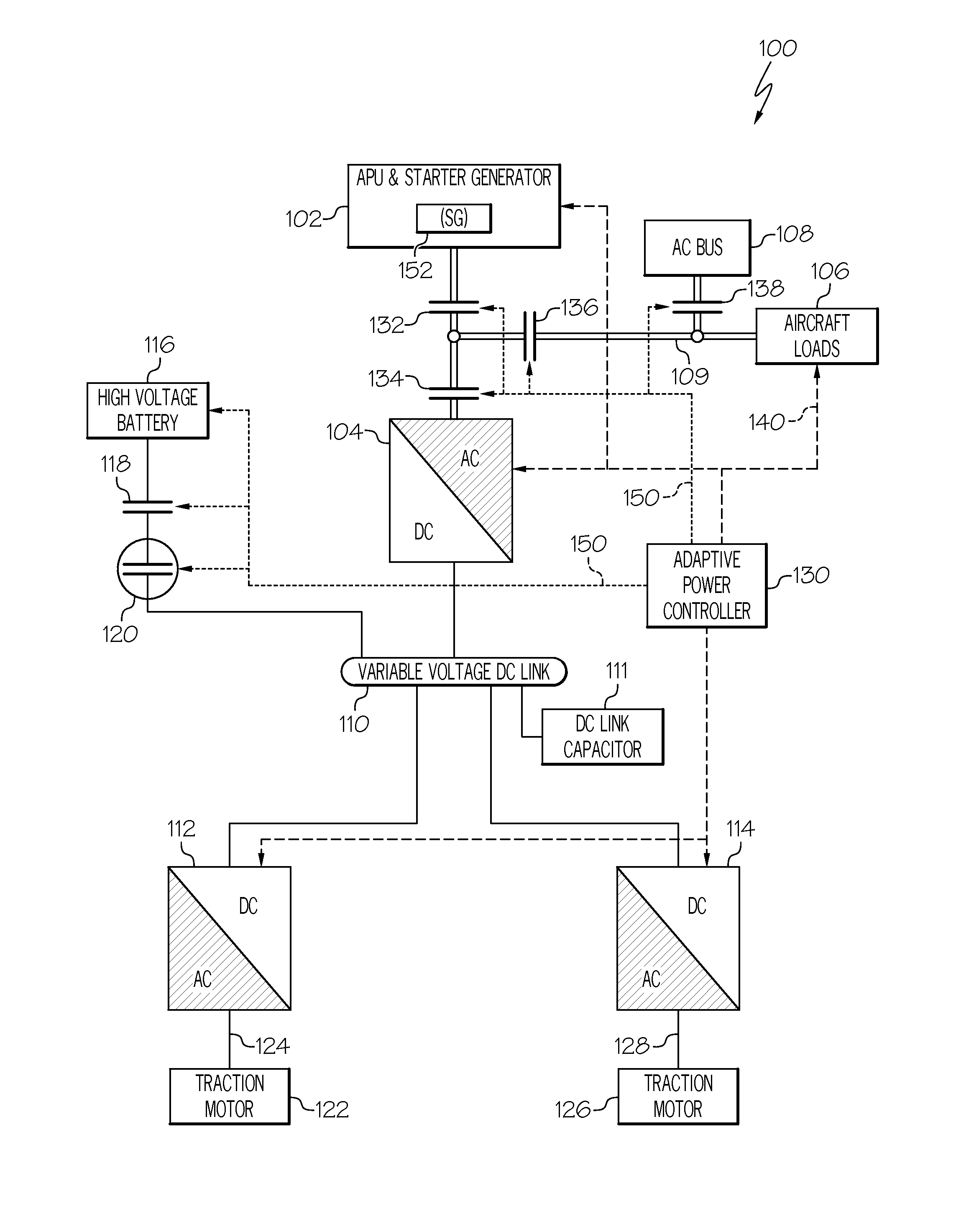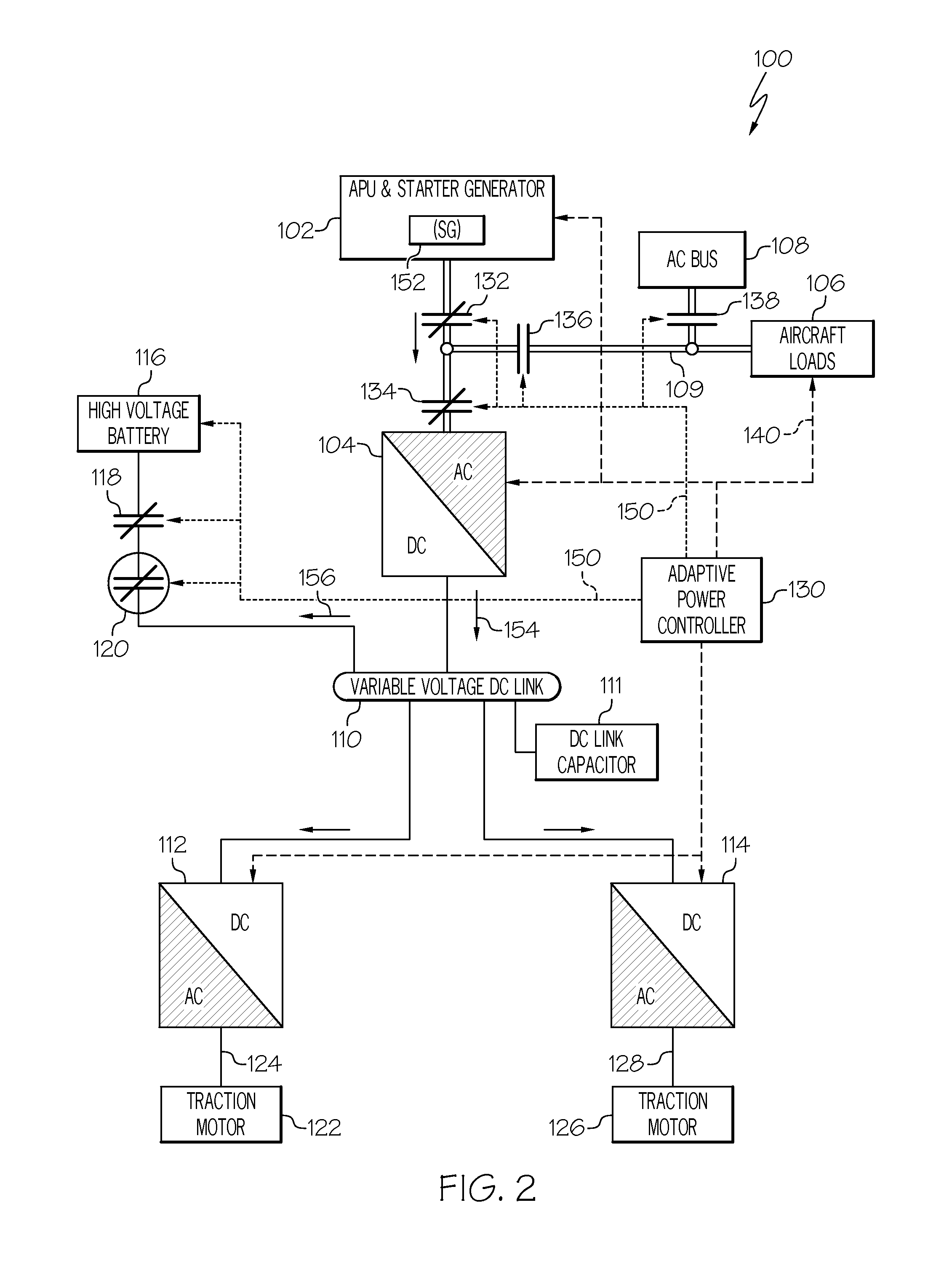Bidirectional conversion architecture with energy storage
a conversion architecture and energy storage technology, applied in the field of aircraft electrical systems, can solve the problems of increasing the weight and volume of the system, undesirable frequent operation of the clutch, and inefficient discharging of regenerated power into resistors
- Summary
- Abstract
- Description
- Claims
- Application Information
AI Technical Summary
Benefits of technology
Problems solved by technology
Method used
Image
Examples
Embodiment Construction
[0018]The following detailed description is of the best currently contemplated modes of carrying out the invention. The description is not to be taken in a limiting sense, but is made merely for the purpose of illustrating the general principles of the invention, since the scope of the invention is best defined by the appended claims.
[0019]Various inventive features are described below that can each be used independently of one another or in combination with other features.
[0020]The present invention generally provides an aircraft electrical system that employs an energy storage device as an adjunct source of electrical power for an electric taxi system (ETS). More particularly, the present invention provides for a system in which energy produced by regenerative braking is effectively utilized to, among other things, power ancillary electrical loads or reduces mechanical loads on the APU.
[0021]Turning now to the description and with reference first to FIG. 1, a schematic diagram may...
PUM
 Login to View More
Login to View More Abstract
Description
Claims
Application Information
 Login to View More
Login to View More - R&D
- Intellectual Property
- Life Sciences
- Materials
- Tech Scout
- Unparalleled Data Quality
- Higher Quality Content
- 60% Fewer Hallucinations
Browse by: Latest US Patents, China's latest patents, Technical Efficacy Thesaurus, Application Domain, Technology Topic, Popular Technical Reports.
© 2025 PatSnap. All rights reserved.Legal|Privacy policy|Modern Slavery Act Transparency Statement|Sitemap|About US| Contact US: help@patsnap.com



